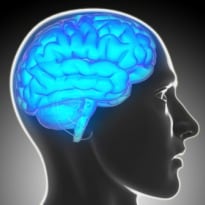A new study conducted by the University of Waterloo explains the link between a certain part of brain and craving high-calorie food. According to the researchers, dorsolateral prefrontal cortex is an area in brain that is involved in 'execution function'. Previous researches have established that DLPFC has a vital role to play in regulating food cravings.The team carried out an experiment on 21 women who frequently craved calorie-dense foods. These women were first shown pictures of high-calorie foods to stimulate their craving. The experts then applied magnetic stimulation to their DLPFC. It was found that this theta-burst stimulation resulted in reducing craving pangs for high-calorie foods in these women. During a subsequent "taste test," these women consumed more of these foods, rather than alternative, less-appetizing foods (dark chocolate and soda crackers). Stimulation to weaken DLPFC activity was also associated with lower performance on a test of inhibitory control
strength.
The study was published in Psychosomatic Medicine: Journal of Biobehavioral Medicine, the official journal of the American Psychosomatic Society. According to the study, decreased DLPFC activity appeared to be associated with increased "reward sensitivity" and made the participants "more sensitive to the rewarding properties of palatable high caloric foods," the researchers said.The experts explained how people with weak executive function may lack the dietary self-control which plays a crucial role in regulating calorie-dense foods. Those who struggle to maintain this self-control may be more likely to become overweight or obese. DLPFC stimulation may come as a boon to them.At the "basic neurobiological level," the study provides direct evidence that the DLPFC is involved in one specific aspect of food cravings - reward anticipation.The team therefore concluded that with minor magnetic stimulation to a person's DLPFC, one's craving for high-calorie foods can be manipulated accordingly. This can aid in keeping a check on the rising levels of global obesity and associated diseases. Inputs from PTI
strength.
The study was published in Psychosomatic Medicine: Journal of Biobehavioral Medicine, the official journal of the American Psychosomatic Society. According to the study, decreased DLPFC activity appeared to be associated with increased "reward sensitivity" and made the participants "more sensitive to the rewarding properties of palatable high caloric foods," the researchers said.The experts explained how people with weak executive function may lack the dietary self-control which plays a crucial role in regulating calorie-dense foods. Those who struggle to maintain this self-control may be more likely to become overweight or obese. DLPFC stimulation may come as a boon to them.At the "basic neurobiological level," the study provides direct evidence that the DLPFC is involved in one specific aspect of food cravings - reward anticipation.The team therefore concluded that with minor magnetic stimulation to a person's DLPFC, one's craving for high-calorie foods can be manipulated accordingly. This can aid in keeping a check on the rising levels of global obesity and associated diseases. Inputs from PTI
Advertisement
For the latest food news, health tips and recipes, like us on Facebook or follow us on Twitter and YouTube.
Tags:









